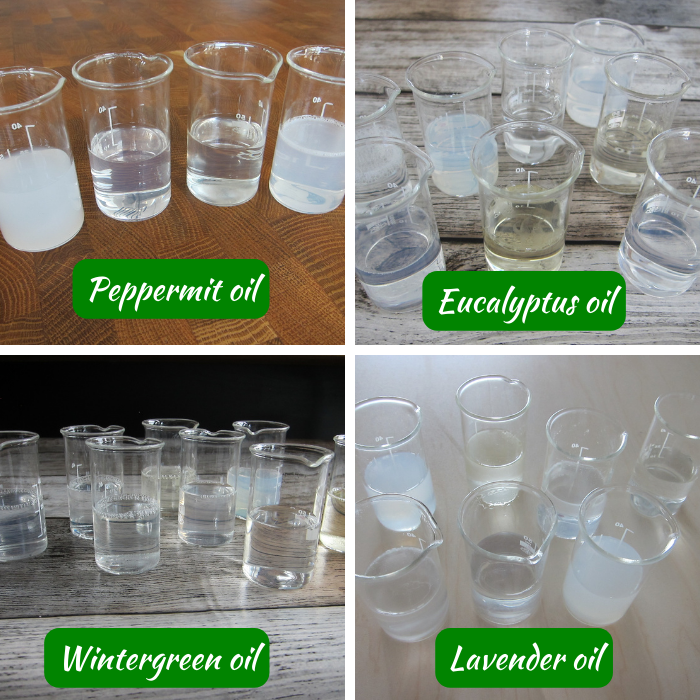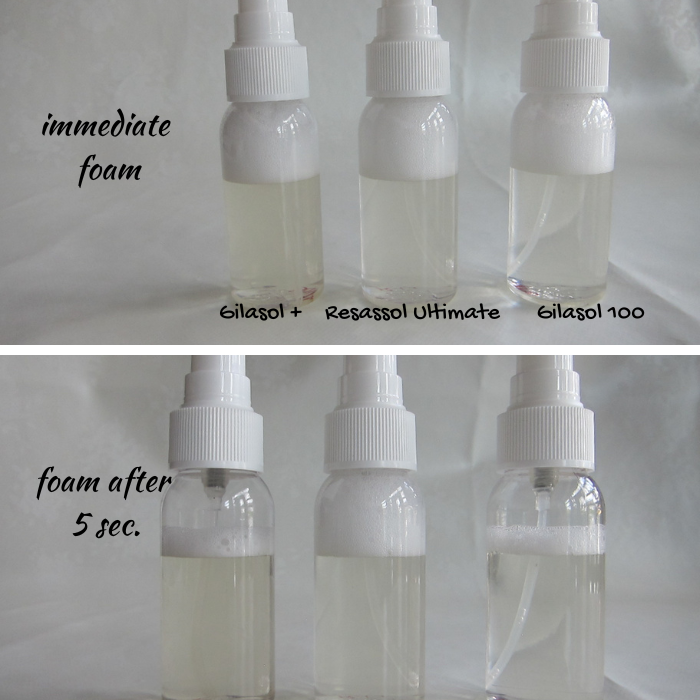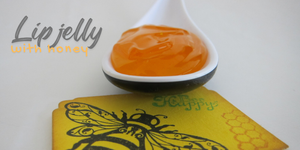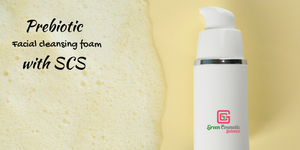
and your eyes are not failing you. You can only see 10 on the photo. One of them was camera shy and is not on this photo.
If there is one conventional ingredient that I miss as a "green" formulator that is the polysorbate 20 (OK 2 ingredients including the PEG-40 hydrogenated castor oil) as universal solubilizers.
During the last 12 years I have been testing and working with several "natural" solubilizers none of them really appealing to me. Those that were effective foamed like hell and has a sticky skin feel. It was so annoying that I finally stopped using solubilizers at all and left the role of a beautiful scent to hydrosols and floral waters. But that wasn't a solution when I needed to solubilize a lipophilic ingredient in a hydrophilic base. Anyway I gave up the search for a long time and at the beginning of this year started collecting a few new (to me) samples and comparing their performance with some already known solubilizers that I have tested and used in the past.
When we use/need a solubilizer
A solubilizer is a match maker between water and oil. This is (almost) similar to what an emulsifier does (no wonder both solubilizer and conventional emulsifiers are surfactants) with some differences in the structure and HLB.
We use a solubilizer when we:
- want to disperse/solubilise a lipophilic ingredient in a hydrophilic carrier (the difference to emulsion is the nature of the oil, the concentration of the oil and the particle size). The oil can be a fragrance oil, an essential oil, a lipophilic vitamin or another lipophilic ingredient
- when the fragrance or the essential oil has a negative impact on the viscosity of a cleansing product. In such cases the surfactants in the cleanser usually can incorporate the oil in the product but the essential or fragrance oil causes a reduction of the viscosity. In this case blending the fragrance7essential oil with a solubilizer will counteract the negative impact on the viscosity and the stability of the formulation
What we expect from a solubilizer?
1- works at a reasonably low concentration
2- has no impact on the color, scent and viscosity of the product
3- has a nice skin feel (no tackiness)
4- does not foam like a dog shampoo
5- ideally works for lots of essential oils, lipophilic vitamins and preservatives
Here are the solubilizers we tested
1- symbio®solv clear +
INCI: Caprylyl/Capryl Glucoside; Aqua; Sodium Cocoyl Glutamate; Glyceryl Caprylate; Citric Acid; Polyglyceryl-6 Oleate; Sodium Surfactin
2- SEPICLEAR G7™
INCI: Heptyl Glucoside
3- Gilasol
INCI: Polyglyceryl-3 Cocoate, Caprylyl/Capryl Glucoside, Polyglyceryl-6 Laurate
4- Gilasol Plus
INCI: Caprylyl/Capryl Glucoside, Polyglyceryl-6 Laurate, Coco-Betaine
5- Gilasol 100
INCI: Caprylyl/Capryl Glucoside, Polyglyceryl-4 Caprate, Polyglyceryl-6 Laurate
6- Resassol Apostrophie
INCI: Caprylyl/Capryl Glucoside, Polyglyceryl-3 Cocoate, Polyglyceryl-10 Laurate, Citric Acid, Aqua
7- Resassol Ultimate
INCI: Caprylyl/Capryl Glucoside, Polyglyceryl-10 Laurate, Babassu Oil Polyglyceryl-4 Esters, Citric Acid, Aqua
8- LEXSOLV™ ESSENTIAL
INCI: polyglyceryl-10 heptanoate (and) glycerin (and) water
9-Evicare® polysolve 10L 100
INCI: Polyglyceryl-10 Laurate
10- Evicare® polysolve 4C
INCI: Polyglyceryl-4 Caprate
11- StabiCare™ SOLUB
INCI: Polyglyceryl-10 Caprylate/Caprate (and) Pentylene Glycol (and) Aqua
I am sure there are at least 5o other natural solubilizers under the blue sky that we haven't yet tested. We didn't test the Poly Suga Mulse D9 which is the favorite solubilizer of many formulator colleagues in these series of tests because I tested it several years a go and didn't like the skin feel and the foaming.
What we tested:
Our main requirement for a solubilizer is incorporation of essential oils in a hydrophilic carrier such as body mist or a facial toner. The product is usually sprayed over the skin so the foaming is enhanced by the spray nozzle. Low tackiness, low foam and a low solubiliter: oil ratio were our main requirements.
Solubilizers work very selective with various essential oils. A solubilizer than works with a certain essential oil at a 3:1 ratio may need a 10:1 ratio with another essential oil.
These are the lipophilic ingredients we tested:
Triethyl citrate
Evicide® Rose 26: Phenethyl Alcohol, Ethylhexylglycerin (a lipophilic non-preservativ, preservative blend)
Evicide® BBD: Benzyl Alcohol, Benzoic acid, Dehydroacetic acid, Tocopherol ( a lipophilic preservative blend)
Lavender oil
Eucalyptus oil
Peppermint oil
Wintergreen oil


Considering all the above mentioned factors these are our favorite solubilizers:
Gilasol +
Gilasol 100
Resassol ultimate
The gilasol + imparts a yellowish shade to the formulation when you are not using any plant extracts or other ingredients with an inherent color. If that is an issue them the Gilasol 100 would be the next best option.
This study is not sponsored (except the free samples we have received from the suppliers)


